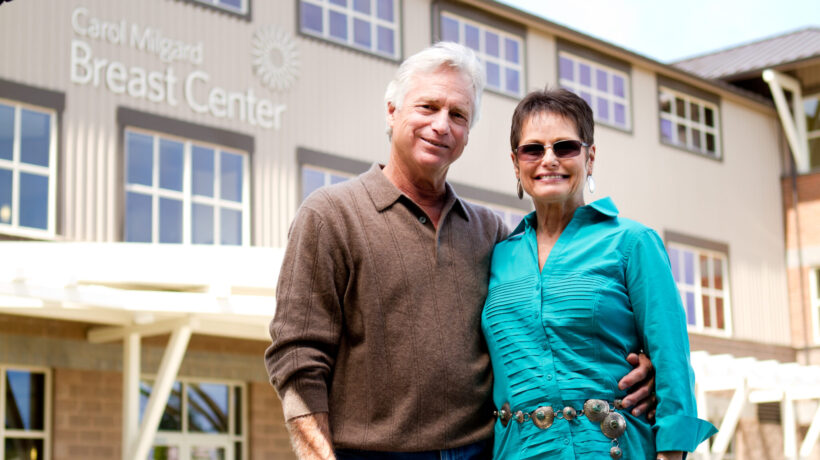Common Myths

Misconceptions and incorrect information about breast cancer can cause women more anxiety than necessary. Carol Milgard Breast Center radiologists debunk some of the most common myths below.
-
MYTH: Women with no family history of breast cancer have no risk of getting the disease.
-
Although women with breast cancer in their family may have an increased risk of getting the disease, on average, three out of four women with newly diagnosed breast cancers have no family history. The biggest risk factors for breast cancer are being a woman and growing older. Regardless of family history, we encourage all women 40 years of age and older to get a screening mammogram once a year.
-
MYTH: A breast injury can develop into breast cancer.
-
There is no evidence that bruising or injuring your breast(s) leads to cancer. One reason for this myth is that an injury may draw attention (by a woman or her health care provider) to the area, thus making it easier to notice a lump or tumor that’s actually been present for some time.
-
MYTH: If I have a breast lump, it must be cancer.
-
Most breast lumps you can feel are not cancer. They could be cysts or a benign condition called fibroadenoma. Lumps can also be pre-cancerous conditions that may need some treatment. But don’t let these facts lull you into complacency. All lumps should be checked thoroughly.
-
MYTH: Lumps are the only sign of breast cancer.
-
Lumps are not the only sign of breast cancer. Skin irritation; unusual pain; dimpling on the breast; nipple pain; inverted nipple; thickening of the skin, redness or scaliness of the nipple or breast skin; or a discharge other than breast milk can also be important warning signs for breast cancer. It is important not to ignore these changes. If you have unusual breast changes, please let your health care provider know.
-
MYTH: Only women can get breast cancer.
-
Many people do not realize that men have breast tissue and can develop breast cancer—although it’s very rare accounting for approximately 0.7% of all breast cancers. The Carol Milgard Breast Center diagnoses approximately five men with breast cancer each year. If you are a man and notice any changes or symptoms in your breast, please let your health care provider know. Learn more about breast disease in men.
-
MYTH: Antiperspirants and underwire bras can cause breast cancer.
-
Urban myths have suggested that chemicals in underarm antiperspirants or underwire bras can eventually lead to breast cancer. There is no evidence or studies to indicate that using antiperspirants or wearing any type of bra increases the risk of, much less causes, breast cancer.
-
MYTH: There is nothing a woman with average risk can do to reduce her risk of developing breast cancer.
-
Many risk factors are things you cannot change, such as your age, your family history, and how old you were when you started and stopped having menstrual periods. But there are other important risk factors that you do have some control over, and that can help reduce your risk of developing breast cancer. These include your weight, physical activity level, and how much alcohol you drink. Vitamin D levels may also be important. See Improve Your Breast Health to learn more.
-
MYTH: Silicone breast implants increase the chance of breast cancer.
-
Silicone implants may cause formation of scar tissue in the breast, but several studies have found that they do not increase the risk of developing breast cancer.
-
MYTH: Young women don’t need to worry about breast cancer.
-
Breast cancer can affect women of any age. The disease is more common in post-menopausal women, but 25 percent of women with breast cancer are younger than 50. Younger women should have a yearly breast exam by their health care provider and begin mammography screenings at age 40. If you have unusual breast changes, please let your health care provider know.
-
MYTH: If I have a normal screening mammogram result, I don’t need a mammogram next year.
-
Evidence has shown that women who skip a yearly mammogram may miss the opportunity for an early breast cancer diagnosis. Women whose breast cancer is detected at an early stage have a 93 percent or higher survival rate in the first five years. That’s why the Carol Milgard Breast Center and TRA Medical Imaging advise women to get screening mammograms every year starting at age 40. Even though your mammography exams may come back normal each year, you should not ignore any noticeable changes in your breasts and discuss them with your health care provider as soon as possible.
